The Best Things To Do In Sumba In 2025
Recognisable for its pointed thatched-roof homes, turquoise waters, and beach-bound wild horse population—here at Urban List, we reckon that Sumba is one of the most underrated Indonesian islands.
A deeply cultural destination, with the indigenous religion of Marapu running through the local customs and festivities, Sumba is the lesser-known island that floats on the western edge of the Savu Sea—Indonesia’s so-called “forgotten island” and one of the country’s best-kept secrets.
From enviable surf breaks to rock pools and jungle treks, we've narrowed down the very best things to do in Sumba, so you don't have to.
The Best Things To Do In Sumba At A Glance
Jump to:
- The Best Outdoor Adventures
- The Best Sunset Views
- The Best Surf Breaks
- The Best Spots To Experience Local Culture
- The Best Places To Stay
The Best Outdoor Adventures
Waimarang Waterfall
East Sumba
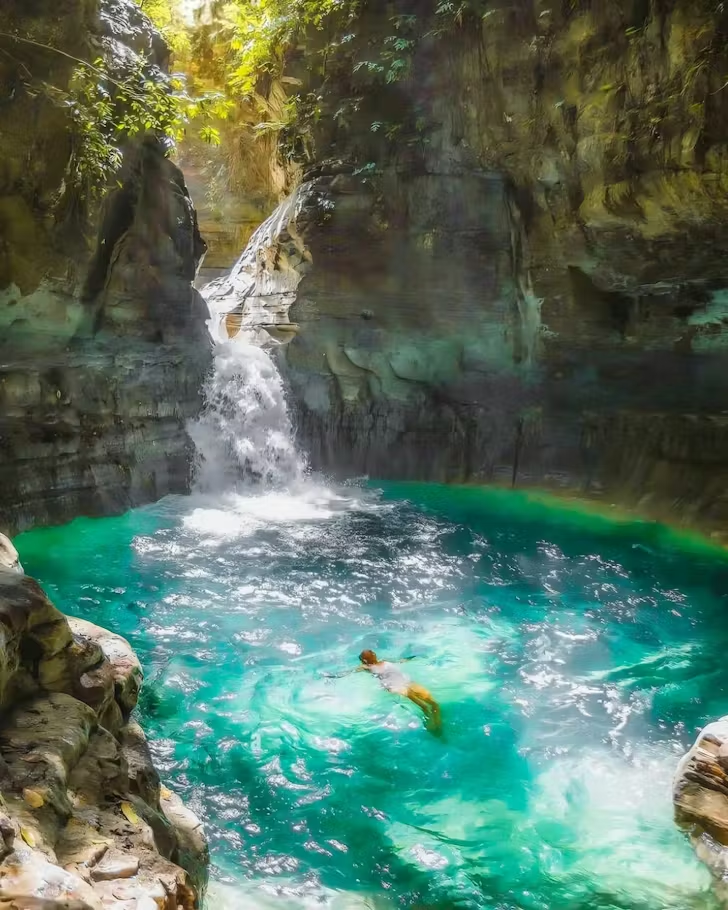
Image credit: Explore Sumba | Instagram
Tucked deep in East Sumba’s Umalulu district, Waimarang Waterfalls is one of the island’s most photographed natural spots—and reaching it is half the adventure. From Waingapu, it’s about a two-hour drive through open savanna before you hit the small parking area and begin the trek down. The trail drops steeply at first, with loose soil and a ravine beside the path, before flattening out through dry forest. A final set of stone-and-soil steps brings you to a series of turquoise pools tucked between high cliffs.
The falls flow across three tiers, but most visitors head straight for the final one—a narrow cascade dropping into a brilliant blue natural pool that feels like a hidden grotto. The water is crystal clear and varies in depth, making it perfect for a swim after the hike. If you’re feeling brave, the surrounding cliffs offer low and high ledges for jumps, though caution is essential as the rocks can be slippery.
Insider intel
- Wear proper hiking shoes—the descent is slick after rain and there are no railings. Bring plenty of water, and start early to avoid the harsher midday heat on the trek back up.
Mandorak Beach
West Sumba
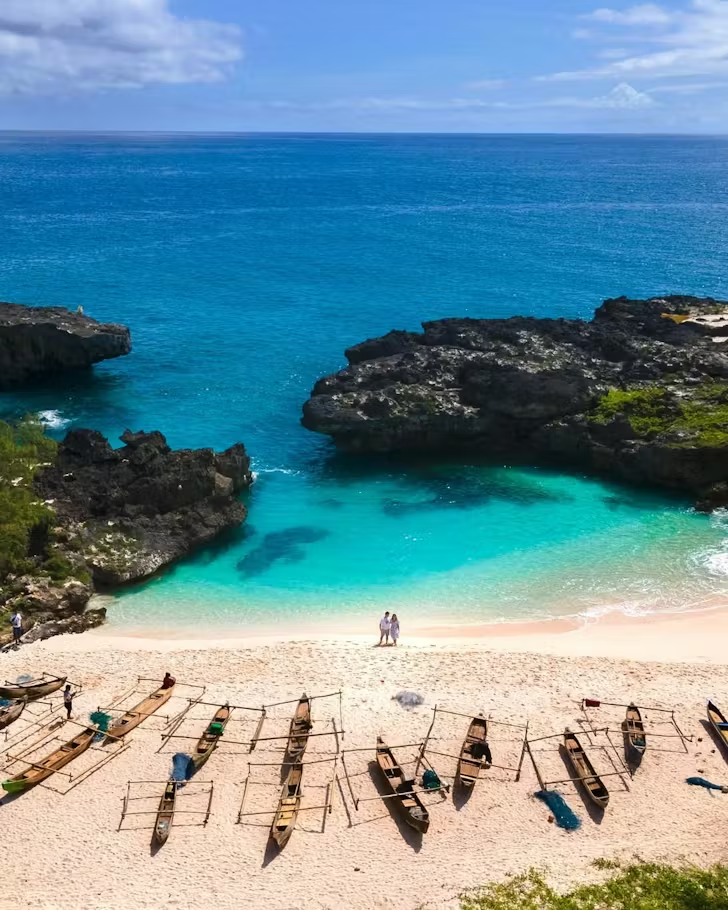
Image credit: Lelewatu Resort Sumba | Instagram
On Sumba’s western tip, Mandorak Beach is a small, secluded stretch of white sand framed by two striking limestone cliffs. The scene is almost otherworldly—clear turquoise water, dramatic rock formations, and a peaceful atmosphere you won’t find at the island’s busier spots. The cliffs double as a natural lookout, offering wide-open views of the sea and some of the best photo angles in the area.
The beach itself is compact, which only adds to its private, tucked-away feel. Soft breezes, gentle waves, and shifting blue tones make it an easy place to linger.
Insider intel
- Mandorak is an easy walk from Weekuri Lagoon, so we recommend combining them in one trip.
Weekuri Lagoon
East Nusa Tenggara
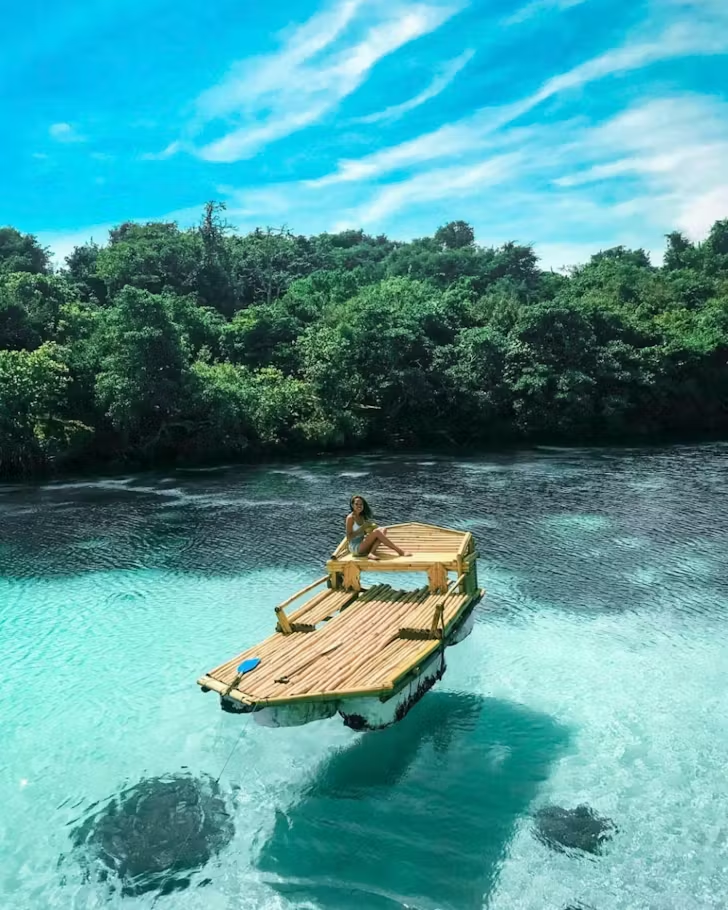
Image credit: Lelewatu Resort Sumba | Instagram
About a 2-hour drive from Tambolaka, Weekuri Lagoon is one of Southwest Sumba’s standout natural attractions. Tucked behind coral cliffs on the island’s western edge, this saltwater lagoon glows a striking turquoise, with water so clear you can see the white sand below. Because it’s fed by both the ocean and freshwater springs, you’ll feel pockets of warm and cool water as you swim—one of the lagoon’s most unique quirks.
The area is calm, shallow in parts, and perfect for a long, lazy float. If you climb the surrounding cliffs, you’ll be rewarded with sweeping views of the open sea and the grasslands beyond.
Insider intel
- Facilities are minimal, so come prepared with snacks and water, and plan to stay in Tambolaka if you’re exploring the region overnight.
Horse Riding
Various Locations

Image credit: Travel and Leisure Asia | Instagram
Before it ever blew up on Instagram, swimming with horses was just a regular part of life in Sumba. Locals have been guiding their horses into the ocean for generations, and it’s still common to see kids spending long afternoons riding along the sand or cooling their animals in the shallows while they catch up with friends.
Many local resorts offer horse riding as an experience, so you can step straight into this tradition. Mornings often start with the horses wandering down to the shoreline, and guests are invited to join as they wade and splash through the shallows.
Insider intel
- The bigger resorts, such as Nihi Sumba and The Sanburi are your best bet if horse riding is on your bucket list for the trip.
You might also like:
The Best Sunset Views
Tanjung Mareha
Southwest Sumba
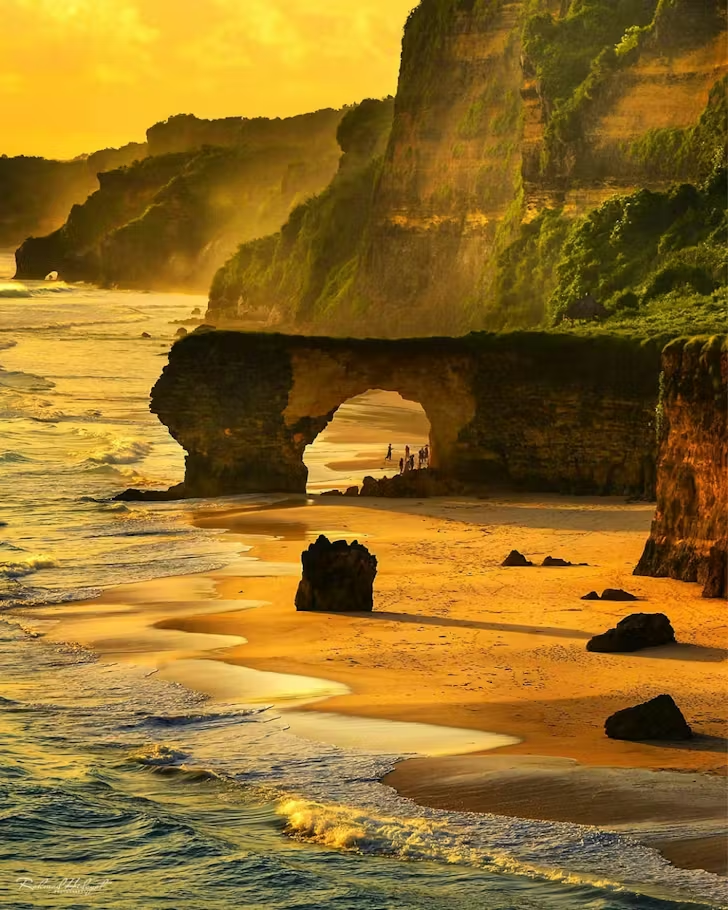
Image credit: Rahmad Hidayat | Instagram
About a two-hour drive from Tambolaka, Tanjung Mareha is one of Southwest Sumba’s most dramatic lookouts—a high grassy headland that juts into the ocean and gives you front-row views of not one, but two beaches. Stand at the edge (carefully—there are no railings) and you’ll feel like you’re on the bow of a giant ship, with Maladong Beach on one side and Mbawana Beach on the other. From above, the views are incredible: Maladong with its towering cliff walls and pillar-like rock formations, and Mbawana with its sweeping archway and long stretch of sand.
It’s also one of the rare spots on the island where you can watch both sunrise and sunset from the same place, thanks to the cape’s position facing the open sea. The area is completely undeveloped, so expect nothing but wind, views, and wild coastline.
Insider intel
- Aim for golden hour—sunrise lights up Mbawana, while sunset hits Maladong’s cliffs.
Raksasa Tidur Wairinding Hill
East Sumba

Image credit: Pasar Hamburg | Instagram
Set in Temu Village in East Sumba’s Kanatang district, Wairinding’s “Sleeping Giant” Hill gets its name from its silhouette—rolling curves that look uncannily like a giant lying on its back.
A short trek brings you to the top, where you’ll find sweeping views of layered hills, distant mountains, and a vast savanna that shifts colour with the seasons—lush green during the wet months, golden and dry between July and October. There are no facilities here, so expect pure, unfiltered landscape and plenty of room to roam.
It’s also one of the best spots in East Sumba to catch sunrise or sunset, with nothing blocking the horizon in either direction.
Insider intel
- For photos, sunset tends to give the strongest contrast across the “sleeping giant” outline, while sunrise is quieter and often completely crowd-free.
Marosi Beach
West Sumba
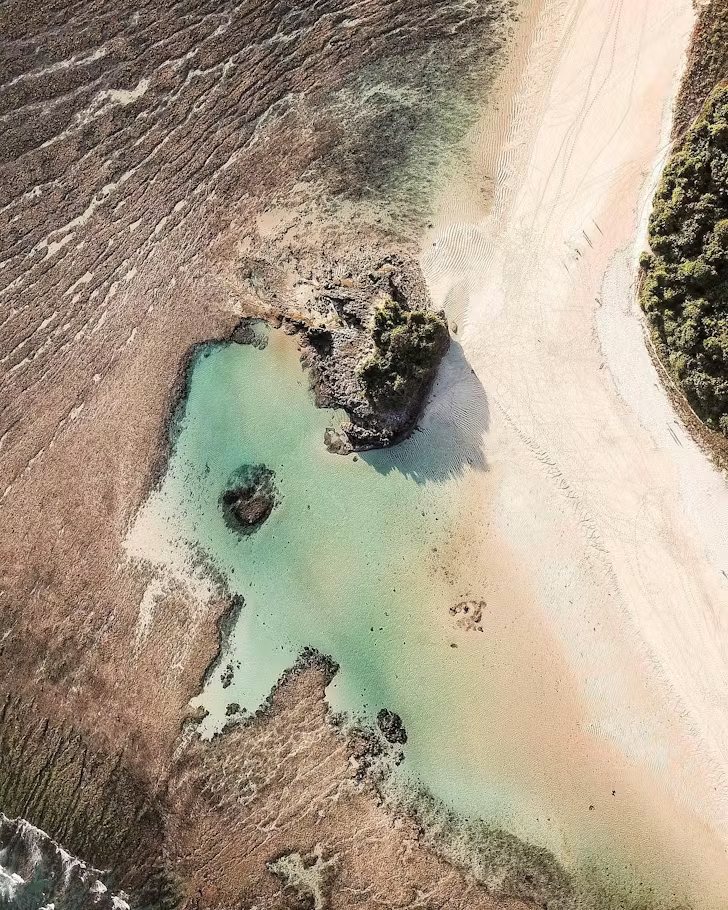
Image credit: Yuki Anggia | Instagram
A short walk or quick scooter ride from Dassang, Marosi Beach sits on one of West Sumba’s more expansive, more open stretches of coastline. The beach is known for its long curve of sand, shifting tides, and steady surf—features that make it feel bigger and more dynamic than many of Sumba’s quieter bays.
While Marosi is great throughout the day, it’s the late afternoon that sets it apart. The horizon here is completely unobstructed, so the light moves cleanly across the water and sand as the sun lowers. Colours change quickly—occasionally, the local horses make their way to the shoreline around this time too.
Insider intel
- Plan to arrive 30–45 minutes before sunset; the most interesting light often happens earlier than you expect.
The Best Surf Breaks
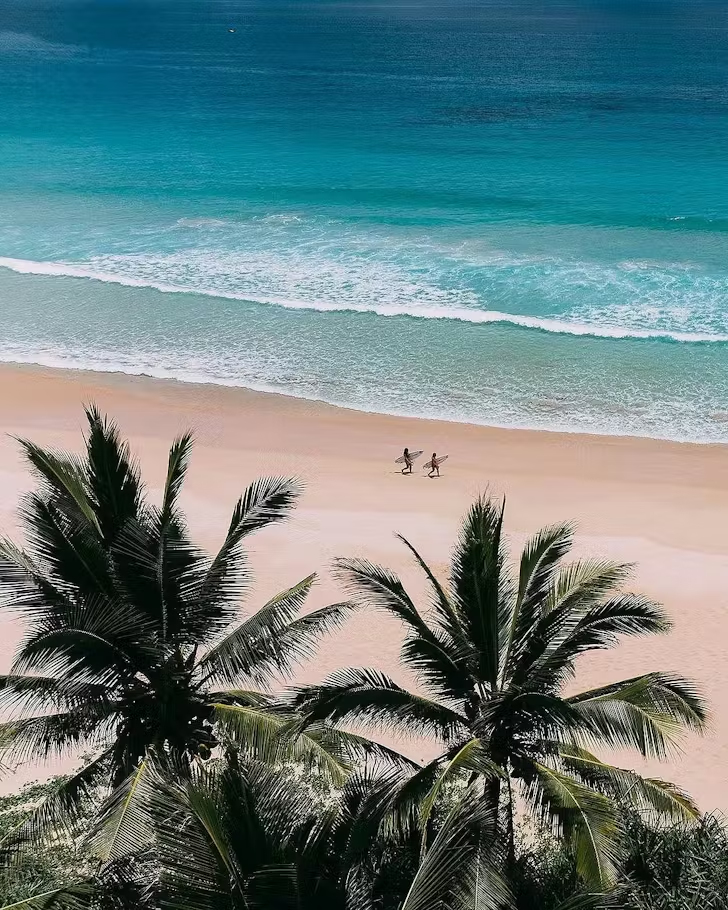
Image credit: Nihi Resort | Instagram
Miller's Rights
Central Sumba
Set on a remote stretch of central Sumba’s coastline, Miller’s Rights is a heavy deepwater right with a steep, unpredictable takeoff that quickly bends into a fast bowl. It needs solid S–SW swell and mid to high tide to hold its shape, and morning sessions usually offer the cleanest window.
There’s no channel and no nearby infrastructure, so getting in and out requires careful timing and confidence for navigating the reef. It’s a break suited to experienced surfers who want power, isolation, and a completely unfiltered lineup.
Insider intel
- Best on 6–8 ft S–SW swell with long period. Bring water, a spare leash, and reef protection — you won’t find help nearby.
Occy’s Left
East Nusa Tenggara
Breaking directly in front of Nihi Sumba, Occy’s Left is a long, fast left-hander that runs along a sharp reef shelf with clean lines and real tube potential. The wave gained its reputation after Mark Occhilupo scored it on a film trip, and it’s stayed in the “dream wave” category ever since.
Access is limited to resort guests, which keeps the lineup quiet and maintains high quality. With the right swell and tide, Occy’s offers long, hollow walls suited to advanced surfers who know how to handle speed and shallow reef.
Insider intel
- Best with a solid S–SW swell and mid tide. Expect strict session caps at Nihi to keep crowds low.
Pero Left
West Sumba
Set near the small coastal village of Pero in West Sumba, Pero Left is a user-friendly reef break with a short left that’s fun rather than intimidating.
On bigger swells, it can offer a bit more push, but most days it’s a relaxed, cruisy wave that suits mellow sessions, warm-ups, and anyone looking for an easygoing option between heavier breaks.
Insider intel
- Mid tide is your safest window, especially if the swell is small. The reef gets shallow on the inside, so keep an eye on your line when the tide drops.
Pantai Marosi
West Sumba
Patai Marosi is one of West Sumba’s more approachable places to surf, with a broad beachbreak that stays friendly in smaller swells. It’s well-suited to beginners and intermediates thanks to its forgiving takeoffs, open faces, and lack of major hazards compared to some of the island’s heavier reef setups.
Insider intel
- Go on smaller S–SW swells and mid tide for the smoothest conditions. The banks shift often, so take a moment to watch the lineup before paddling out.
The Best Spots To Experience Local Culture
Local Markets
Various Locations
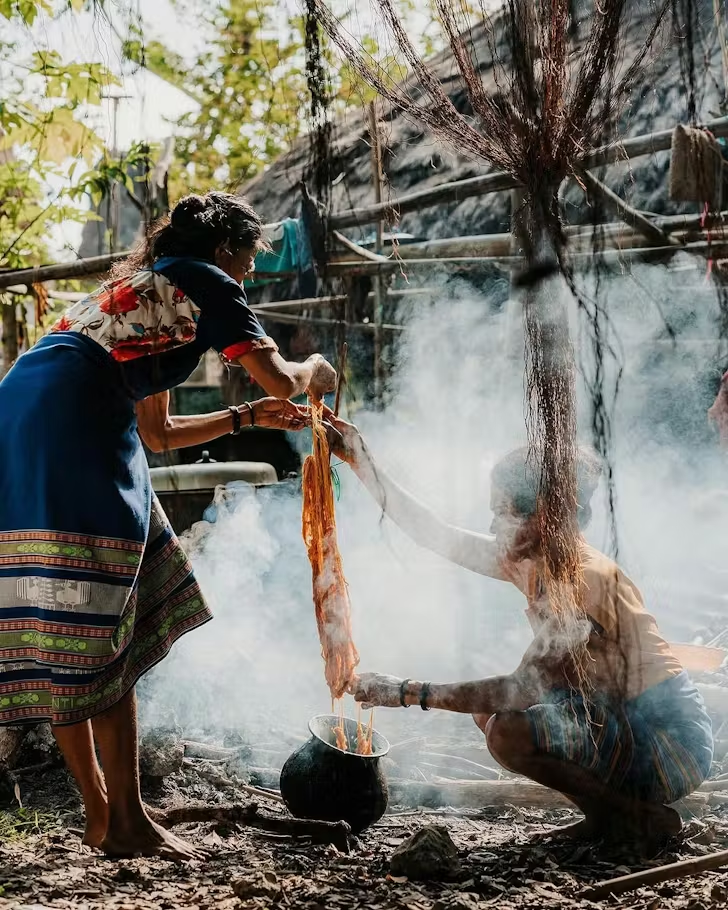
Image credit: Nihi Resort | Instagram
A visit to the local markets is one of the easiest ways to tap into everyday Sumbanese culture. Stalls are filled with Tenun Ikat in the form of sarongs, dresses, and head wraps, each piece dyed and woven by hand using techniques passed down through generations.
You’ll also spot pottery, beadwork, shell accessories, and other small crafts made from materials gathered on the island.
Insider intel
- There's Weekuri Market, as well as community markets and craft stalls around Waingapu and Waikabubak.
Traditional Villages
Various Locations
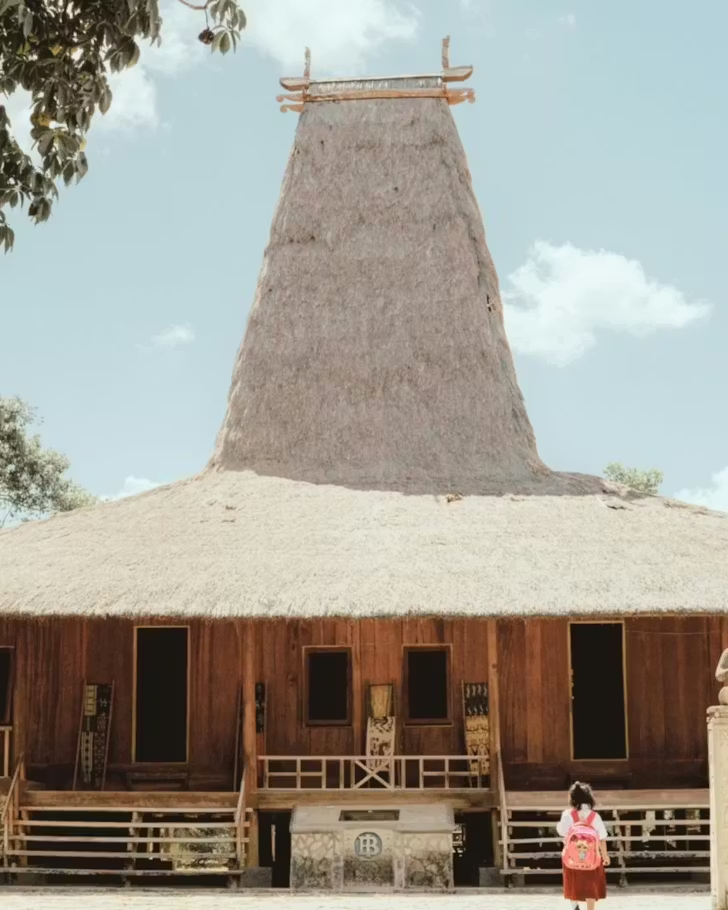
Image credit: ARYA Sumba | Instagram
Sumba’s traditional villages offer a window into the older way of life that still shapes the island today. These communities are known for their uma mbatangu (high, steep thatched roofs designed to link the living world with the spiritual one) and for the megalithic tombs that sit at the centre of village life. Many of these sites are still used for ceremonies and ancestral rituals, a window into continuity and living tradition.
Notable villages include Praijing, set on a hillside with sweeping views and well-preserved homes; Ratenggaro, where towering roofs and ancient tombs overlook the coast; and Tarung, a cultural hub in Waikabubak where customary practices remain strong. In places like Prailiu and Ratenggaro, you’ll often see women weaving Ikat outside their homes, using techniques passed down through generations.
Insider intel
- Visit with a local guide to understand village customs and ensure respectful etiquette—some areas restrict photography or require small offerings.
Pasola Festival
West Sumba
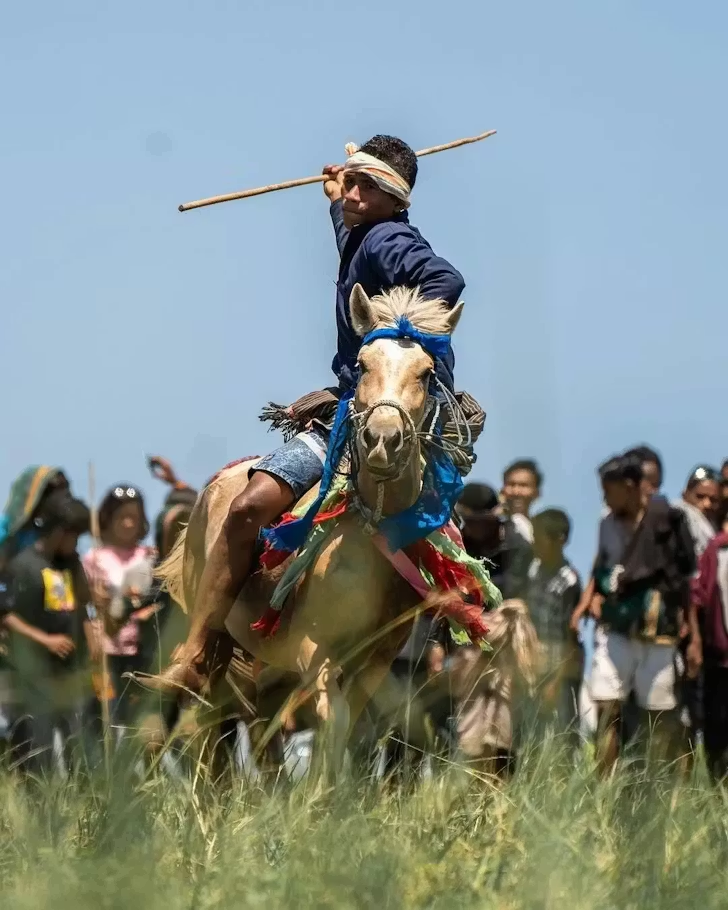
Image credit: Lelewatu Resort | Instagram
Pasola is one of Sumba’s most dramatic and ancient rituals: a ceremonial horseback battle held each February or March in West Sumba. Riders charge at one another at high speed, throwing wooden spears in a display tied to the Marapu belief system and the island’s agricultural calendar.
The exact date is determined by the appearance of nyale (sea worms) along the coast, believed to signal the year’s harvest.
Insider intel
- Viewing areas fill quickly, so plan to arrive early. Wear covered shoes (the ground can be uneven and muddy) and follow local guidance on where spectators can safely stand.
The Best Places To Stay
Nihi Sumba Island
West Sumba

Image credit: Nihi Resort | Instagram
The five-star resort Nihi Sumba Island is made up of 27 uniquely designed villas, each with panoramic views over the Indian Ocean. The largest employer on the island, which gives profits back to local community causes, the hotel features tree houses, a one-of-a-kind (and trademarked) “Spa Safari”, and sea swimming experiences with horses.
It's also one of the 50 best hotels in the world, and you'll soon see why.
Insider intel
- This is definitely not a cheap and cheerful stay—but you'll get the best value for your money.
The Sanubari
West Sumba
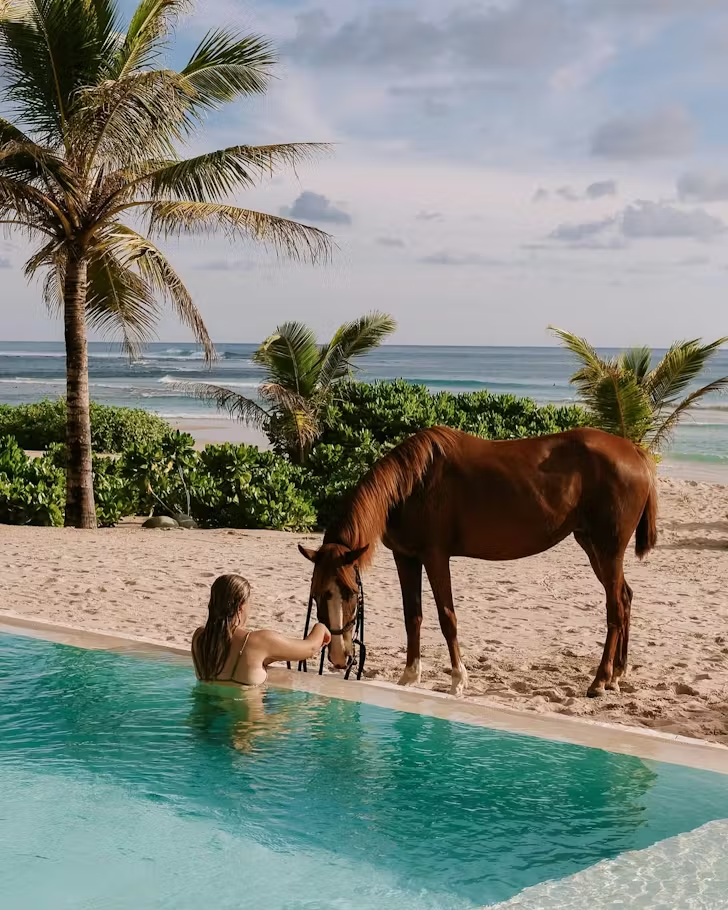
Image credit: The Sanubari | Instagram
The Sanubari sits on a 100-hectare reserve within the ancestral lands of the Marapu people, surrounded by untouched beaches, open savanna, and some of Sumba’s most important cultural sites.
It’s a base for travellers who want more than a standard island stay—think surfing quiet breaks, visiting megalithic villages, riding horses along the coast, and joining artisan programs run with local communities.
Insider intel
- The resort focuses on connection as much as comfort, giving guests access to experiences that are unique to this part of Indonesia, from swimming with horses to learning traditional weaving techniques directly from Sumbanese craftswomen.
Ketanu Bamboo Lodge
Praikalogu
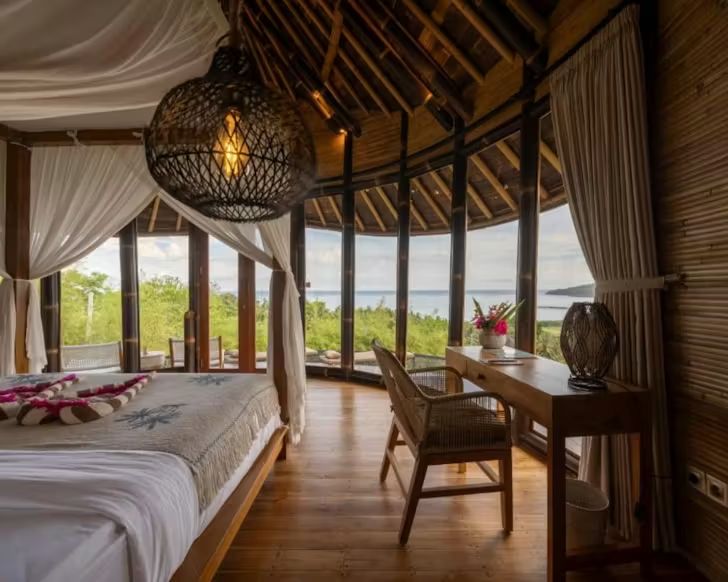
Image credit: Ketanu Bamboo Lodge | Booking.com
Ketanu Bamboo Lodge offers a breezy, boutique stay in Praikalogu, with sea-facing rooms designed for comfort. Each room comes with air-conditioning, a private bathroom, and either a balcony, terrace, or patio — ideal for catching the afternoon light and coastal views.
The property has a relaxed, resort-style feel, with a pool overlooking the landscape, a small spa area, a sun terrace, and lush gardens. Guests can dine at the on-site restaurant serving Indonesian and European dishes, with vegetarian, gluten-free, and dairy-free options available. Breakfast ranges from continental to Asian, with pastries and fresh fruit to start the day.
Insider intel
- Set about 60km from Tambolaka Airport and a short distance from Rua Beach, it’s a convenient base for exploring Wanokaka Beach and nearby cultural sites.
Lelewatu Resort Sumba
Watukarere
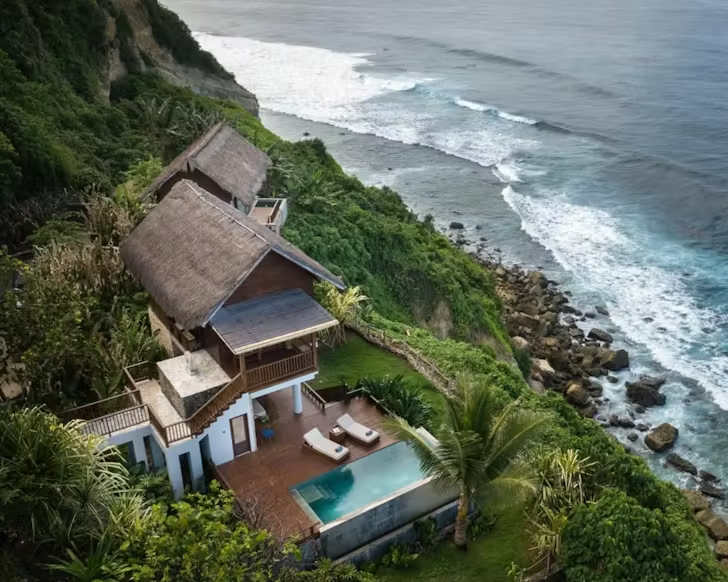
Image credit: Lelewatu Resort Sumba | Instagram
Lelewatu Resort sits on the cliffs of Watukarere, offering sweeping ocean views and villa-style accommodation designed for privacy. Each room includes air-conditioning, a private bathroom, a work desk, and its own pool, plus a terrace overlooking the sea.
The resort features an ocean-facing pool, fitness centre, and a range of nature-focused activities around the island. Meals are served at Bokosawu, the onsite restaurant offering international dishes, with daily dining included in the stay. Free WiFi, a replenished minibar, and attentive reception staff round out the experience.
Insider intel
- Activities often book out early, so reserve cycling or guided excursions when you check in.
Image credit: Couple's Quest | Instagram
Urban List Best Of has our highest stamp of approval—curated lists of the very best recommendations for you to eat, do, see, buy or book, carefully chosen by our Editors.
Urban List editors independently select and write about stuff we love and think you'll like too. Urban List has affiliate partnerships, and if you purchase something through the links in this article, we will earn a commission from those partners. To find out more about who we work with and why read our editorial policy here.



